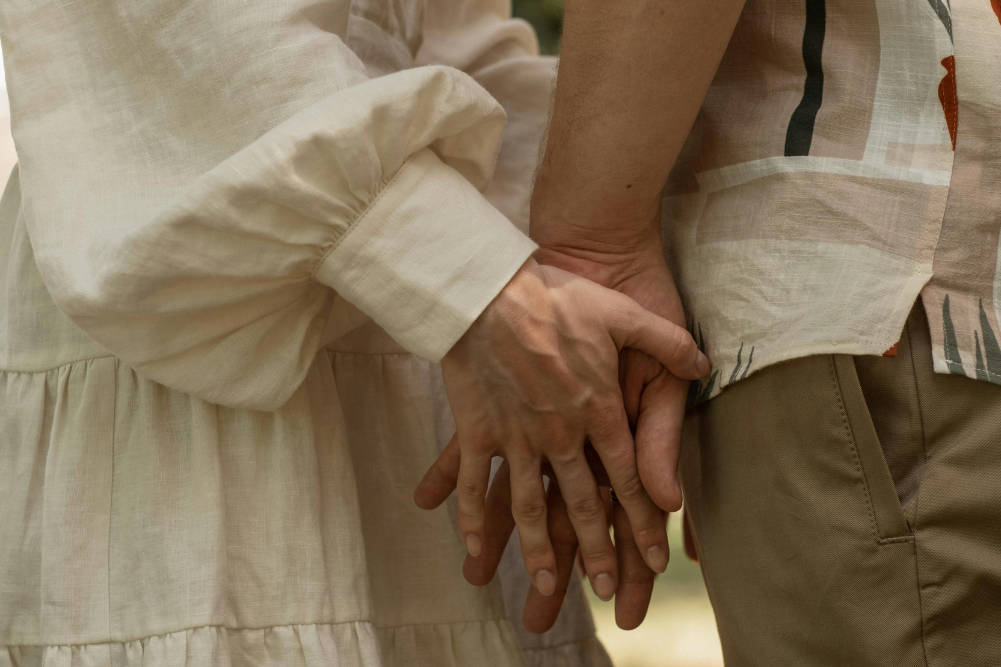The flirtation minefield
Flirting is terrifying. Flirting is exhilarating. If it’s neither of those things for you, then you aren’t doing it right. The scientific definition of “covert signals sent between individuals to indicate sexual interest and begin courtship” does not even scratch the surface of the alarming social high-wire performance that is flirtation. Flirting involves you stretching your metaphorical scrotal self (using scrotal in the non-gendered sensitive-private- bits sense) across the razor-sharp blade that is the opinion of another, usually a stranger. It is inherently scary, but it’s also fundamentally exciting because the rewards are equally as elevating as the downsides are desiccating. It is no wonder then, that for thousands of years, humans have studied the art and science of flirtation. Some of what has been found has been enlightening, the rest is just confusing.
Ovid and fans
Such is the terrifying ubiquity of flirtation in our social interactions that almost as soon as humans could scratch marks on parchment, efforts have been made to codify how to flirt well. One of the earliest outlines of the art of flirting came from the Roman poet Ovid, in a series of poems published between 20 BCE and 16 BCE, titled Amores, or The Loves. Writing to his married girlfriend Ovid wrote:
“Watch me and my nods and my expressive features: Catch my furtive signs and you yourself return them. Words that are spoken without voice, I shall speak with my eyebrows; You will understand the words traced by my fingers, words written in wine. When the wantonness of our love comes into your mind, With tender thumb touch your blushing cheeks.”
It appears that Ovid may have been capable of a level of eyebrow semaphore that requires years of training. Admittedly, Ovid was also suggesting a private code to his mistress, but he nailed the essence of flirtation with the phrase “catch my furtive signs and you yourself return them” and he paved the way for more generalised flirting advice over the millennia to come.
A good place to dip into the stream of flirtation advice that has flowed down the centuries is the Victorian era because the Victorians not only took social customs very seriously, they were fastidious in how they recorded them. In 1890, Henry J Wheman published his book The Mystery of Love, Courtship and Marriage Explained. In it, he outlined many of the flirtation tactics of the time. For instance, carrying your fan in your right hand in front of your face meant “follow me”. Letting your fan rest on your right cheek meant “yes” but a fan on the left cheek meant “no”. Even worse than a left cheek rest, a fan drawn through the hand indicated “I hate you”. If you did not have a fan to hand, the Victorians had plenty of other flirtation tools to work with.
Wearing a glove on the right hand with the thumb exposed indicated “kiss me”, while a glove on the left hand with the thumb exposed asked “do you love me?”. Twirling your parasol meant “be careful, we are being watched” but tapping that parasol on your chin messaged “I am in love with another”. A hat being carried by the crown indicated “follow me” but a handkerchief twirled in the right hand meant “I wish to be rid of you”. It all seems clear cut and simple until your partner in flirtation draws their fan through their gloved right hand, which has a thumb exposed.
Even when a rigid code for flirtation is laid down, it can be difficult to be sure of what is going on. That is the nature, and the joy, of flirtation. Part of the uncertainty arises because people have different flirting styles.
Five flirtation styles
Modern research has established that there are five broad categories of flirtation style.
Physical: The physical flirtation is not necessarily what it sounds like. There is no mandatory hand caressing the shoulder or playful punching in this style. Instead, what you have are people at ease indicating their sexual interest, often through suggestive banter. These physical flirters believe they are good at gauging the interest of others and they usually progress things faster than do the other styles.
Sincere: Sincere flirters want to establish a romantic connection with a potential partner. The stakes are higher here than for the physical flirter, partly because the sincere flirter will offer self-disclosure as a way of establishing meaningful connection. Emotions are a primacy for the sincere flirter, and they are more likely to believe that others are flirting with them.
Playful: As the name suggests, these people view flirting as fun and without long-term implications. The act of flirting itself is the reward for these people and it is an exercise in self-esteem building. Playful flirters may well have expertly flexible eyebrows.
Polite: The polite flirter is extremely cautious and enjoys the protection of rules. These people would be totally at home in the world of fans and gloves. They do not show the elaborately sexually suggestive behaviours of the physical flirter and the awkward thing for the polite flirter is that the object of their flirtation may not know the polite flirter is interested.
Traditional: It is challenging to believe that this style still exists, but the research shows that there are flirters who operate on the belief that the man must initiate interaction, while it is up to the woman to respond. This is a style of flirtation that suits the patient disposition because it takes longer, but that is OK, because traditional flirters tend to be more introverted. The downside is that traditional flirters, especially women, can tend to feel a little invisible.
Effective flirting
A study published in the journal Communication Quarterly showed that those being flirted with only accurately perceive that they are being flirted with 28 per cent of the time. Peacocks must just laugh at us. Humans are bad at flirting. It is amazing really that we have managed to populate at all. Perhaps what has saved us is that within all the diversity and intricacy of flirting fair, there appears to be some attributes of effective flirtation that are universal.
For a start, being overly subtle leads to less success in the flirtation game. It is natural to not be too overt because ambiguity protects your self- esteem, but it also confuses things for the object of your flirting. If you can muster the courage and give some clarity of intention, your flirtation is more likely to have a fruitful outcome.
As far as positive flirtation tactics, there is one that shines beyond all others. One large study that included US and Norwegian populations showed that the single best thing a woman or a man can do when flirting is to laugh at the other person’s jokes. Beyond that commonality, women do better flirtatiously when they used physical contact (but not hugs) and men do better when they give compliments and have good conversations.
There are also some physical aspects that reliably lead to flirtation success. Both sexes do better and seem more desirable when they have a wide stance and take up more physical space. There is also a very specific posture which men interpret as being “flirty” and that is when the woman has her head tilted to side and slightly downward, with the eyes looking forward and the mouth giving a partial smile.
The other thing that marks successful flirtation is indicating that you are a good listener. The way to do this is to listen, but you can give signs that you are a good listener by facing the other person, maintaining eye contact, nodding and adjusting facial expressions. Exhibiting genuine interest in someone is a big winner in the flirtation game.
The gentle art
The research tells us that “courage and determination” and “strong interest” are highly valued by women in flirtation. There is another factor, however, that is an important element of the flirting mix as far as women are concerned and that is the “gentle approach”. This gentleness is identified as being comprised of maturity, seriousness, discreteness, good character and kindness.
All the historical and scientific input over flirting comes to one thing, which is that flirting is a multifaceted and high-stakes game. Therein lies the excitement, therein lies the terror. Wherever you find yourself sitting on the flirtation spectrum, it is a universal mate-signalling strategy. For you then, the choice is clear, either play the flirtation game or find yourself another game to play.








